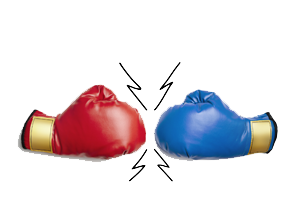Sage X3 is an ERP solution specifically designed for Distributors and Manufacturers, both Discrete and Process Manufacturing including: Instrumentation Controls, Food & Beverage and Chemicals. Out-of-box capabilities deliver industry requirements like Change Control Management, Lot Traceability, Quality Assurance, and Formulations for transactional processing, audits, and regulatory compliance by the FDA, FSMA, 21 CFR Part 11, and more.
SAP Business One relies on 3rd parties for industry specialization (Infor FourthShift for Discrete, Acellos for Distribution, and BatchMaster for Process Manufacturing). Critical functional requirements are often delivered as customizations or add-ons through third parties and the SAP Business One partner channel. The end result, SAP does not support these add-ons and customizations that a customer needs to run its business. The Software Development Kit (SDK) toolset required to develop enhancements has been cumbersome for many SAP Business One partners to use.
Advantage = Sage X3 Why risk your business with a patchwork of solutions cobbled together to complete your business solution? Sage X3 provides industry specific capabilities for your most critical requirements and government compliance so you can focus on growing your business.
Target Market and Scalability
The ideal customer for Sage X3 is a growing, small-to-medium sized company with industry specialization requirements, including Distribution, Discrete and Process Manufacturing. Sage X3 scales for organizations as small as 5 users up to 1000 users (the sweet spot is 15 or more combined users) depending on the functional needs and volume.
SAP Business One is designed for, and targets, small companies with less than 100 employees. SAP Business One lacks functional depth in areas that stress an organization’s ability to grow like single-database multi-company support, consolidated financial data, and limited production capabilities. Although SAP has other ERP solutions that scale for larger enterprises, there is no upgrade path from SAP Business One and it runs on a different technology stack than other SAP solutions.
Advantage = Sage X3 While SAP enjoys greater brand awareness among Fortune 500 companies, SAP Business One fails to capitalize on its brand name with a product that is too small and doesn’t scale for mid-market companies plus requires add-ons for must-have functionality.
Cost (License & Implementation)
Both Sage X3 and SAP Business One are competitively priced for on-premise licensingwhile SAP Business One holds a slight savings advantage vs. Sage X3 via its scaled-down SAP Business One Starter Package. With either product, there are a range of variables to consider when calculating your final cost.
But for purposes of comparison, here’s an example of pricing for a 5-User system:
SAP Business One Cost for 5 users – base financials, not including distribution or manufacturing add-ons starts at $20,000+ a year. SAP business partners promote an implementation project scope as low as 8 weeks without consideration of add-ons or enhancements. Additionally, the SAP Business One Starter Package pricing for 5 users starts at $9,000 a year.
Sage X3 Cost for 5 users – including financials, inventory and manufacturing is $29,130 a year. Typical implementation project scopes start at 80 days and scale upwards based on organizational complexity and functional requirements. A 5 user Sage X3 Cloud option hosted on the Amazon Web Services platform for financials, inventory, and manufacturing starts at $2,150 per month.
Advantage = Sage X3. Only Sage X3 provides the flexibility of an on-premise or true SaaS deployment. The freedom to choose creates options for how to record the investment on a company’s books, the impact on its IT resources and the ongoing cost of ownership.
*Note: cost calculations performed based on information available as of April 2016. Please check with a Sage or SAP Business One authorized partner for a quotation of current pricing and implementation.
Other Helpful Resources
Sage X3 vs Netsuite
Sage X3 vs Dynamics AX
Sage X3 vs Epicor
Sage X3 vs Infor
8 Sins of ERP Implementation Failure (And How to Avoid Them!)
Sage X3 Product Features




